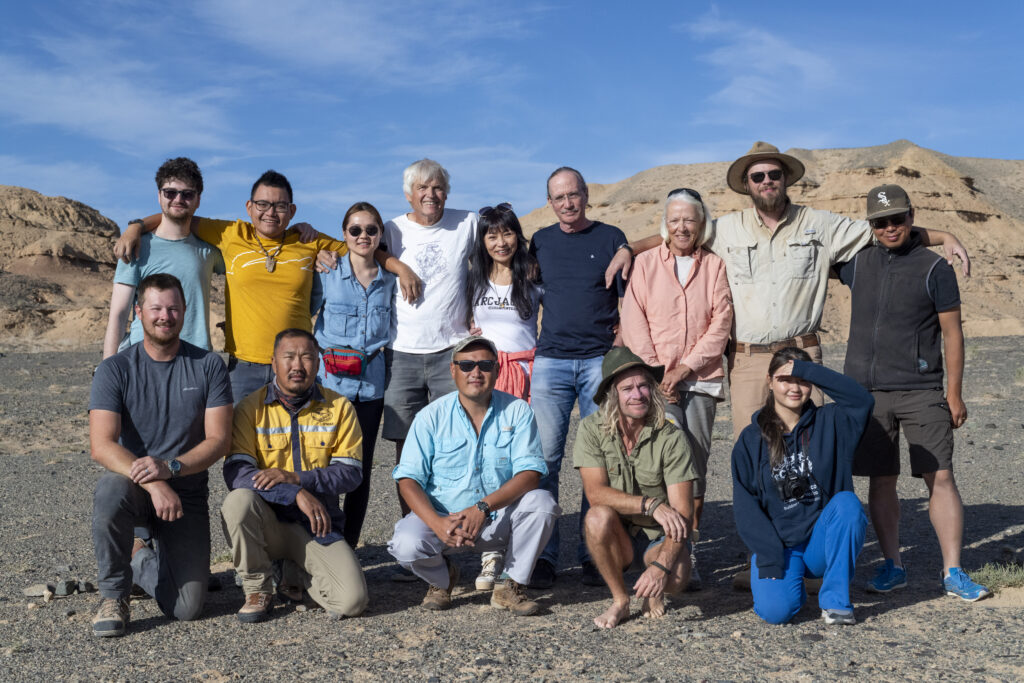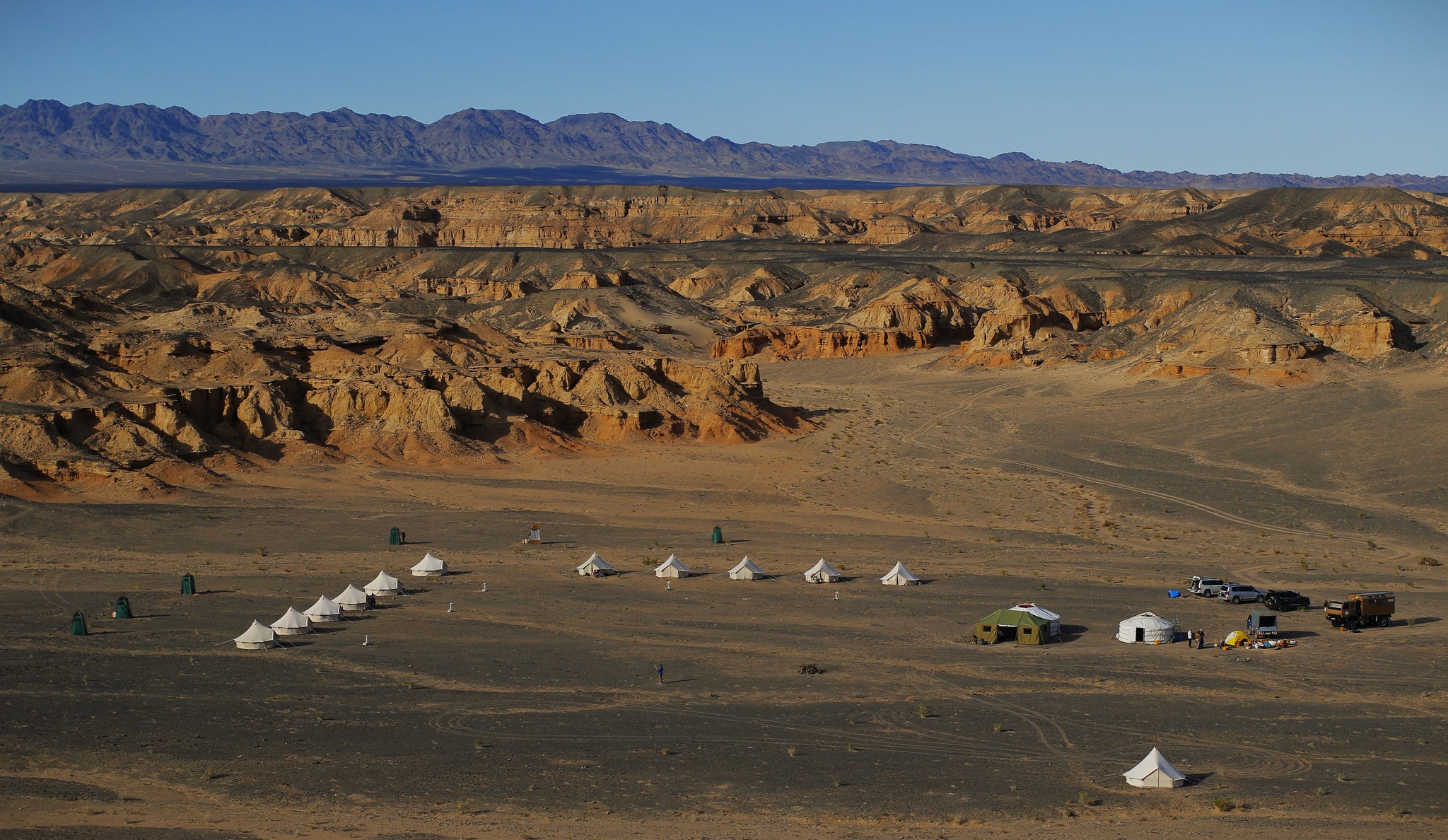By Peter Gorenflos, Berlin, September 29, 2023
From the Natural History Museum on Invalidenstrasse to the Gobi Desert? There can be many reasons for this. My life partner has her roots in Mongolia and so we fly to Ulan Bator almost every year, usually for the national festival, the Naadam festival in July, where wrestlers and archers take part in a competition and a horse race over 30 km takes place. As regular visitors to the Berlin Natural History Museum, we of course also visited the corresponding museum in the Mongolian capital and were particularly fascinated by the dinosaur skeletons, which can easily compete with those in Berlin. Mongolia is a hotspot for paleontology, the science of the living creatures and environments of the geological past. Unfortunately, this beautiful Soviet-era museum had fallen into disrepair and had to be demolished five years ago and was replaced by a modern building. We contacted the head of the paleontological institute, Professor Tsogtbaatar, many years ago and provided the institute with a drone for field surveys. This year we had the unique opportunity to take part in a professional paleontological expedition with Mongolia Quest ourselves, an adventure we had dreamed of for a long time.

Photo by Greg Funston
TWO DIFFERENT SPECIES OF DINOSAURS OR JUST ONE?
The leader of this expedition was the well-known vertebrate paleontologist Phil Currie from the University of Alberta in Canada. His wife, a paleobotanist, and numerous colleagues and students from the USA, Japan, Australia and Mongolia formed a highly professional team. Many universities are chronically underfunded, especially when it comes to basic research. But there is the option of so-called third-party financing. In this case it was us, about fifteen interested laypeople from all over the world, who supported the project with our participation. In the south of the Gobi Desert lies a paradise for dinosaur discoveries. There were Soviet expeditions as early as the 1940s and joint Russian-Mongolian and Polish-Mongolian expeditions in the following decades.
In 1965, a dinosaur skull was found in the Nemegt Formation, but without a skeleton, and 50 km further west, in the Altan Uul area, a skeleton, but without a skull, was found. These finds were assigned to different species, but Phil Currie was among the first to question this classification because both dinosaurs came from the same geological age and belonged to the group of titanosaurs, so named because of their size. Smaller additional fossilized bones were further evidence for this new theory. In 2016, in several adventurous excursions based on records from a Polish institute, it was actually possible to locate lower leg bones in the immediate vicinity of the skull discovery, whose fossilized joints protruded from the rock, with three and a half meters of sandstone above them with a volume of approximately 200 cubic meters. The task of our expedition was to uncover these fossils, at first glance a “mission impossible”. But within a few days, not only shovels and chisels were transported to the quarry, but also jackhammers and the associated generators were brought to a height that could only be reached by daring drivers with perfect local knowledge. My self-chosen task – in addition to taking part in the excavation – was to document it with a drone and camera, which is made available to everyone involved. The impossible became true and within just over a week the tibia and fibula were exposed. It won’t be long before the results will be evaluated and published. Then it will be seen whether Phil Currie’s working hypothesis of the unity of the supposedly different dinosaur species can be confirmed.
PALEONTOLOGY IS A BASIC RESEARCH
We then traveled back to the capital, visited the recently opened Genghis Khan Museum, the Paleontological Institute, a few art museums, the Gandan Monastery and spent a day in Terelj National Park. Our impressions of the expedition were extraordinary. It wasn’t just the relaxed, friendly atmosphere in the camp, which was set up using the simplest means. There was everything here – in the middle of the desert – from toilets and showers to tasty meals including red wine and cold beer.
Above all, it was the professionalism, the evening lectures, discussions and personal conversations about our world that needs to be improved. It was also the fantastic starry sky, the Milky Way, that could be seen so clearly. We promised Phil and his crew that we would use our experiences as an opportunity to create more publicity for paleontology, which is so underestimated. It is part of basic research and, in my opinion, is just as important as landing on the moon. Mongolia is a country that receives far too little attention, despite its friendly, intelligent and bright people, its extraordinary history, its potential, its natural resources and its strategic location.

Photo by Gantumur Khumbaa
FOSSIL POACHING IS A PROBLEM
During the excursion we took a day trip to Altan Uul, where a Soviet research group three quarters of a century ago uncovered a veritable dinosaur cemetery, about the size of a football field. There you can also find fossilized impressions of dinosaur skin, a focus of the research of an Australian participant, Phil Bell. Here you can find bottles of superglue, an unmistakable sign of “poaching”, fossil theft, because small parts of the fossilized finds are joined together with superglue and then stolen.
Investigating and recording such thefts in cooperation with the authorities is now an integral part of every expedition. Wouldn’t it be an interesting challenge for the Natural History Museum in Berlin to acquire a license for this site and thus make a contribution to ensuring that it is preserved and can be scientifically evaluated instead of slowly falling into disrepair? Mongolia is closer and easier to reach than southern Tanzania. There, at Tendaguru, the museum had carried out excavations until the First World War. The brontosaur in the entrance hall comes from this area. Research is currently being carried out there again. How about another mainstay? The connections are easy to make. International cooperation also promotes the peaceful coexistence of our own, conflict-prone species. It would be desirable for many reasons.

Photo by Gantumur Khumbaa
Peter Gorenflos is an oral and maxillofacial surgeon in Berlin. For the German version, please follow the link provided.



